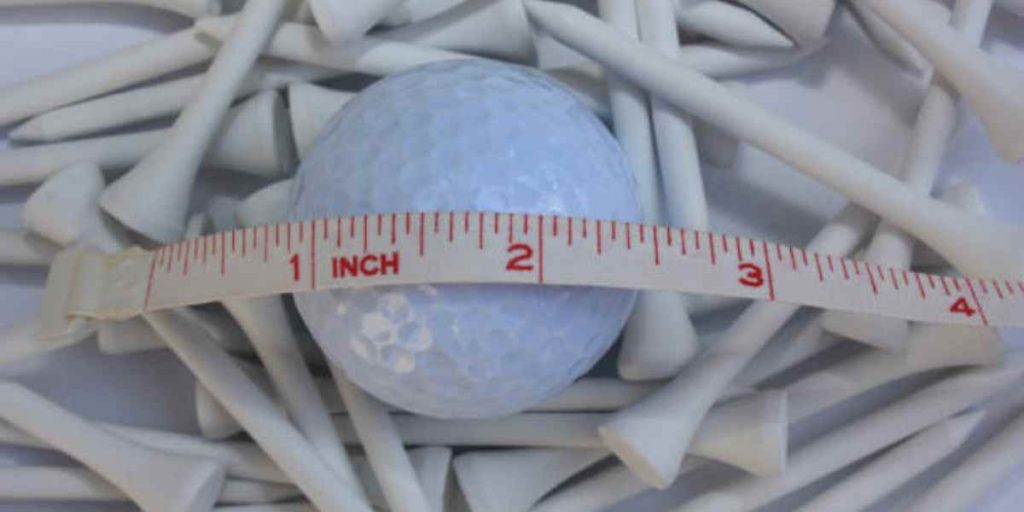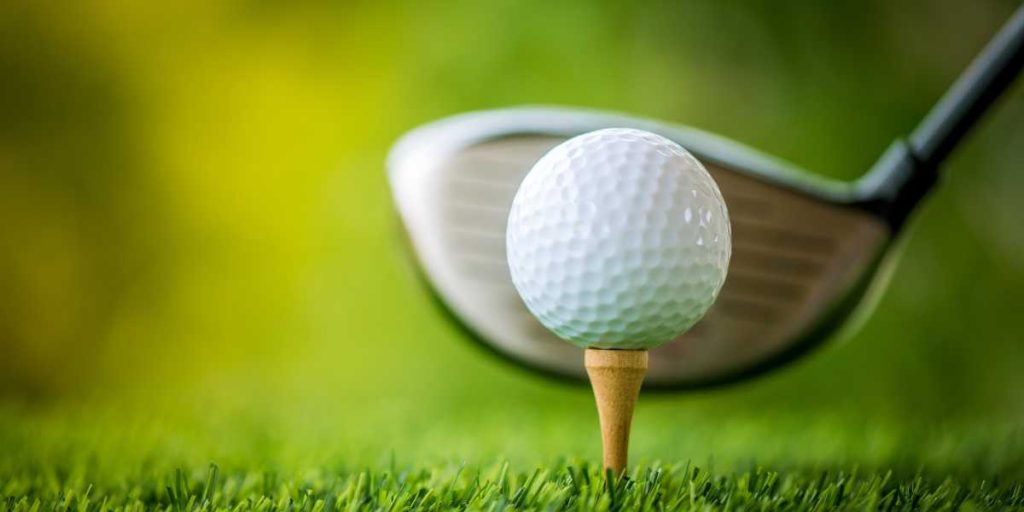Mastering the Fundamentals: How big is a golf ball
Welcome to our block post about how big is a golf ball! We’ll be discussing the dimensions of a golf ball, the size regulations for a golf ball, and the effects of size on a golf ball’s performance. Whether you’re a beginner or a professional golfer, this post will help you understand the impact of size on your game. So let’s dive in and explore the mysteries of the golf ball!
Table of Contents
Standard Size
A standard-size golf ball is a ball that meets the requirements of the USGA and R&A, the two governing bodies of golf, for size and shape. The official size of a golf ball is 1.68 inches in diameter, and the weight should be 46.0 grams.
The diameter of a golf ball is set by the USGA and R&A and is the same for all balls. The size of a golf ball also determines its weight, as heavier balls are larger and lighter balls are smaller.
The size of a golf ball must be consistent from brand to brand. This ensures that all golfers can hit the same ball type and get the same performance results. This consistency also ensures that all golfers use the same ball type when playing in tournaments.
The size and weight of a golf ball can affect the ball’s flight, spin, and overall performance. For example, a larger, heavier golf ball will fly farther and have more spin than a smaller, lighter golf ball. Therefore, it is important to choose the right size and weight of golf balls for your playing style and skill level.
Evolution of Size

Golf ball size has changed drastically over the years, from ancient times when they were made of hard leather stuffed with feathers, to the modern golf ball made of synthetic materials. The evolution of golf ball size is a fascinating subject that has been shaped by advancements in technology, manufacturing processes, and the rules of the game.
In the early days of the game, golf balls were made of hard leather, stuffed with feathers, and coated with a protective varnish to make them more durable. This type of golf ball was very light and had a diameter of about 1.62 inches. This size was dictated by the rules of the game, which allowed only small balls to be used.
By the late 19th century, the golf ball had evolved significantly due to advancements in manufacturing technology. Golf balls were now made of rubber cores that were surrounded by a layer of gutta-percha. This type of golf ball was much larger than the feather-filled leather balls, measuring 2.09 inches in diameter. This increase in size allowed for greater distance and increased the fun of the game.
The next major advancement in golf ball size occurred in the early 1900s when manufacturers began using a two-piece construction. This type of golf ball was made of a rubber core surrounded by a layer of balata or balata-like rubber. These balls were even larger than the gutta-percha balls, measuring 2.24 inches in diameter. This larger size allowed for even greater distance and more accuracy.
The modern golf ball has seen the greatest evolution in size. The modern golf ball is made of a wide variety of materials, including synthetic rubber, urethane, and plastic. These materials have allowed for a variety of sizes, with the maximum size allowed being 1.68 inches in diameter. This size has allowed for even greater distance and accuracy.
The evolution of golf ball size has been a fascinating development in the game of golf. The advances in technology and manufacturing processes have allowed for larger and more accurate golf balls, while the rules of the game have dictated the maximum size of the ball. The modern golf ball is a testament to the progress made over the centuries.
Importance of Size

The size of a golf ball affects its performance in a variety of ways. The size of a golf ball affects how it flies through the air and how far it can travel. A larger golf ball will have a higher launch angle and produce more spin, which will increase the distance it can travel. A smaller ball will produce less spin, resulting in a lower launch angle and less distance.
The size of a golf ball also affects its aerodynamics and how it interacts with the air. A larger golf ball will be more aerodynamic and will be able to cut through the air more easily, while a smaller ball will be more affected by air resistance. The aerodynamic properties of a golf ball will affect the trajectory of the ball and the distance it can travel.
The size of a golf ball also affects the feel of the ball when hit. A larger golf ball will feel softer and will be easier to control, while a smaller ball will feel much firmer and more difficult to control. This can make a huge difference in how a golfer plays the game, as it can affect the accuracy of their shots.
The importance of size in golf ball performance cannot be overstated. A golfer who wants to maximize their distance and accuracy should choose a ball with the right size for their swing. A larger ball will generate more spin and distance, while a smaller ball will be more difficult to control and produce shorter distances. Regardless of the size of the ball, a golfer should always choose a ball that fits their swing and that they are comfortable with.
Measuring Size
The golf ball size is typically measured using a special device called a caliper. A caliper is a precision instrument that is used to measure the length, width, and diameter of an object. The caliper is placed around the golf ball and then the measurements are taken. The caliper is capable of measuring down to a very small fraction of a millimeter.
The caliper is typically made up of a set of two adjustable jaws that can be opened or closed to accommodate different sizes of objects. The jaws are then adjusted to fit snugly around the ball and the measurements are taken. The caliper is able to measure the diameter of the golf ball as well as its circumference. In addition, it can also measure any variations in the size of the ball such as its height.
The measurements taken using the caliper are then used to determine the size of the golf ball. Golf ball size is important as it affects the way the ball will fly and the distance it can travel. Most golf balls must meet certain standards in order to be used in competition. The size of a golf ball is typically measured in millimeters and can range from 40.62mm to 46.67mm.
Golf balls are also sometimes measured using a special tool called a ruler. The ruler is used to measure the length, width, and diameter of the golf ball. The measurements are then used to determine the size of the golf ball.
In addition to the caliper and ruler, golf balls may also be measured using a special device called a micrometer. The micrometer is used to measure the diameter of the golf ball to a very small fraction of a millimeter. This type of measurement is very important in determining the size of the golf ball and its performance.
Overall, the size of a golf ball is measured using a variety of devices such as a caliper, ruler, and micrometer. By using these tools, the size of the golf ball can be accurately determined and used to ensure that the golf ball meets the necessary standards.
Other Considerations

When choosing a golf ball, there are several other factors to consider beyond the price. Compression, construction, and other features can all impact the performance of the golf ball.
Compression is a measure of how hard the ball is when the club strikes it. Higher compression golf balls are firmer and will travel further, but can be harder to control. Lower compression golf balls are softer and will be easier to control, but won’t travel as far. A golfer’s swing speed should be taken into account when choosing a compression rating.
Construction is another factor to consider. Two-piece golf balls are generally the most affordable and are typically best for those with slower swing speeds. Three-piece golf balls provide better distance control and spin for those with higher swing speeds. Four-piece golf balls provide even more control, spin, and distance, but are the most expensive.
Other features that can impact performance include dimples, which affect how much lift and drag the ball has. Covers are also important, as they can impact durability, feel, and spin. The inner core can also be important, as it affects the ball’s compression rating and spin.
Overall, when choosing a golf ball, it is important to consider compression, construction, and other features in order to make the most informed decision.
Common Misconceptions on How big is a golf ball

One of the most common misconceptions about golf ball size is that they all have to be a certain size. This is simply not true. While the USGA and PGA both have rules and regulations regarding golf ball size, they are not the same for every ball. The size of the golf ball is determined by the type of ball being used, the type of golf club the ball is being hit with, the golfer’s skill level, and the type, of course, being played.
Another misconception about golf ball size is that the size of the ball affects the distance it will travel. The truth is, the size of the ball does not affect the distance the ball will go. The size of the golf ball does have an effect on the ball’s spin, but the spin is only a small part of the equation when determining the ball’s distance. The ball’s speed, loft, trajectory, and the golfer’s swing all have a much larger impact on the ball’s distance than the size of the ball.
Finally, some people believe that the larger the ball, the easier it is to hit. This is also untrue. In fact, the size of the golf ball does not have any effect on the ease of hitting the ball. The ball’s weight and the golfer’s technique are the two primary factors that determine how easy it is to hit the ball.
Overall, it is important to remember that there are no hard and fast rules when it comes to golf ball size. Different types of golf balls and different types of clubs are going to require different golf ball sizes. The only way to determine the best ball size for a particular golfer is to experiment and find the size that works best for their style and skill level.
Conclusion
In conclusion, a golf ball is a small sphere that measures approximately 1.68 inches in diameter and weighs 1.62 ounces. While the size and weight of a golf ball can vary slightly depending on the brand and type, the dimensions are generally consistent and designed to meet the specifications set by the United States Golf Association (USGA).
